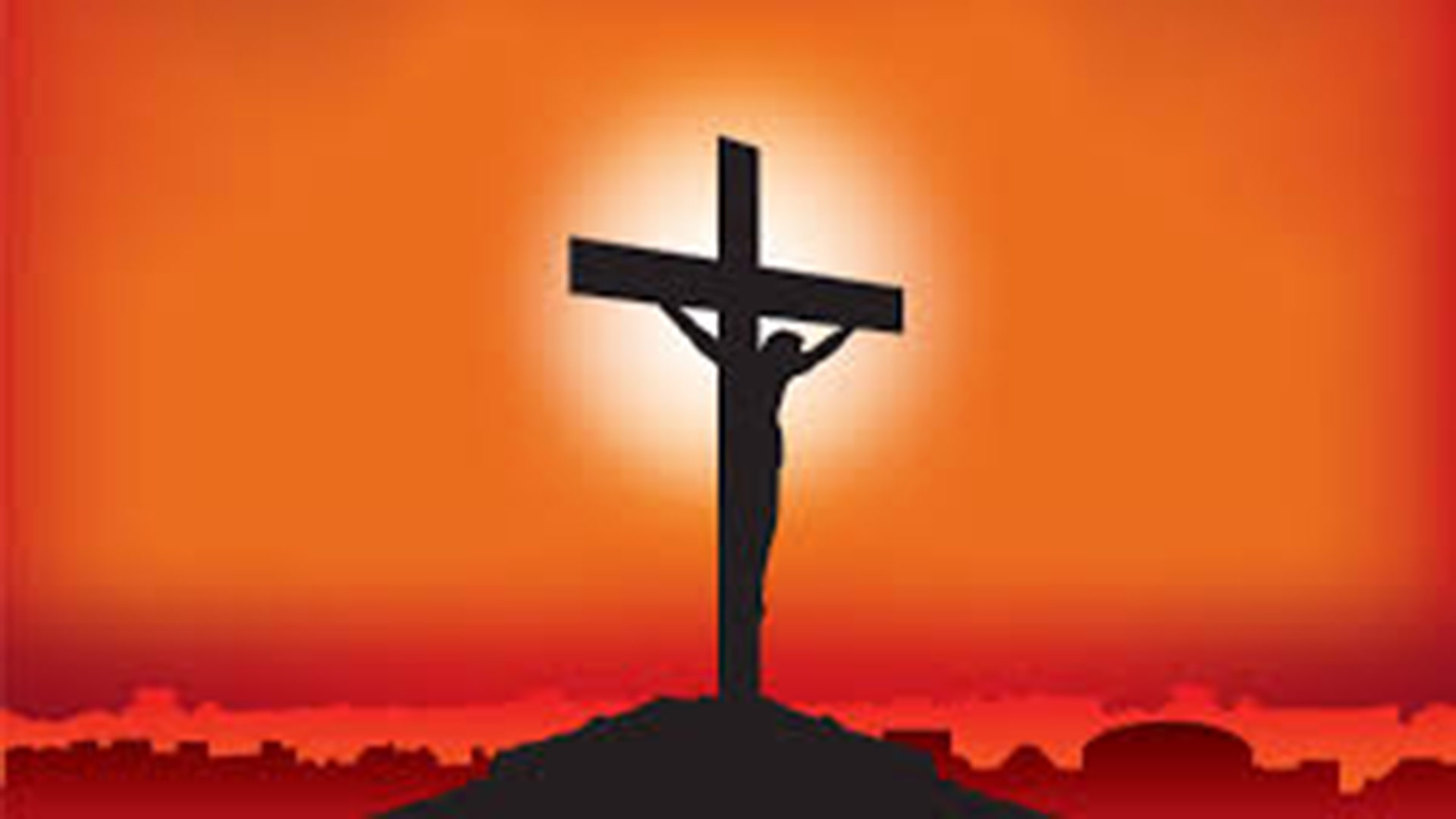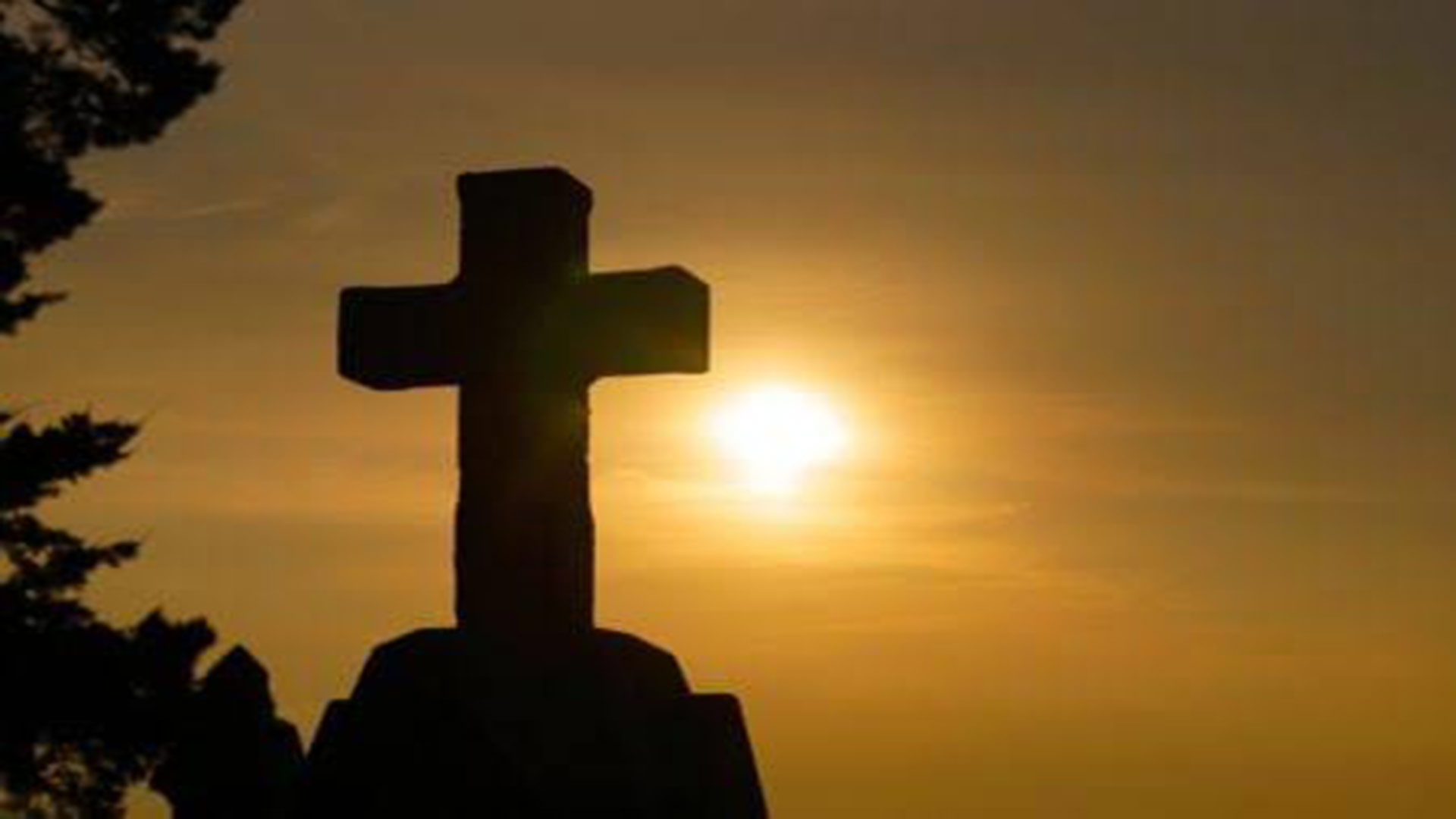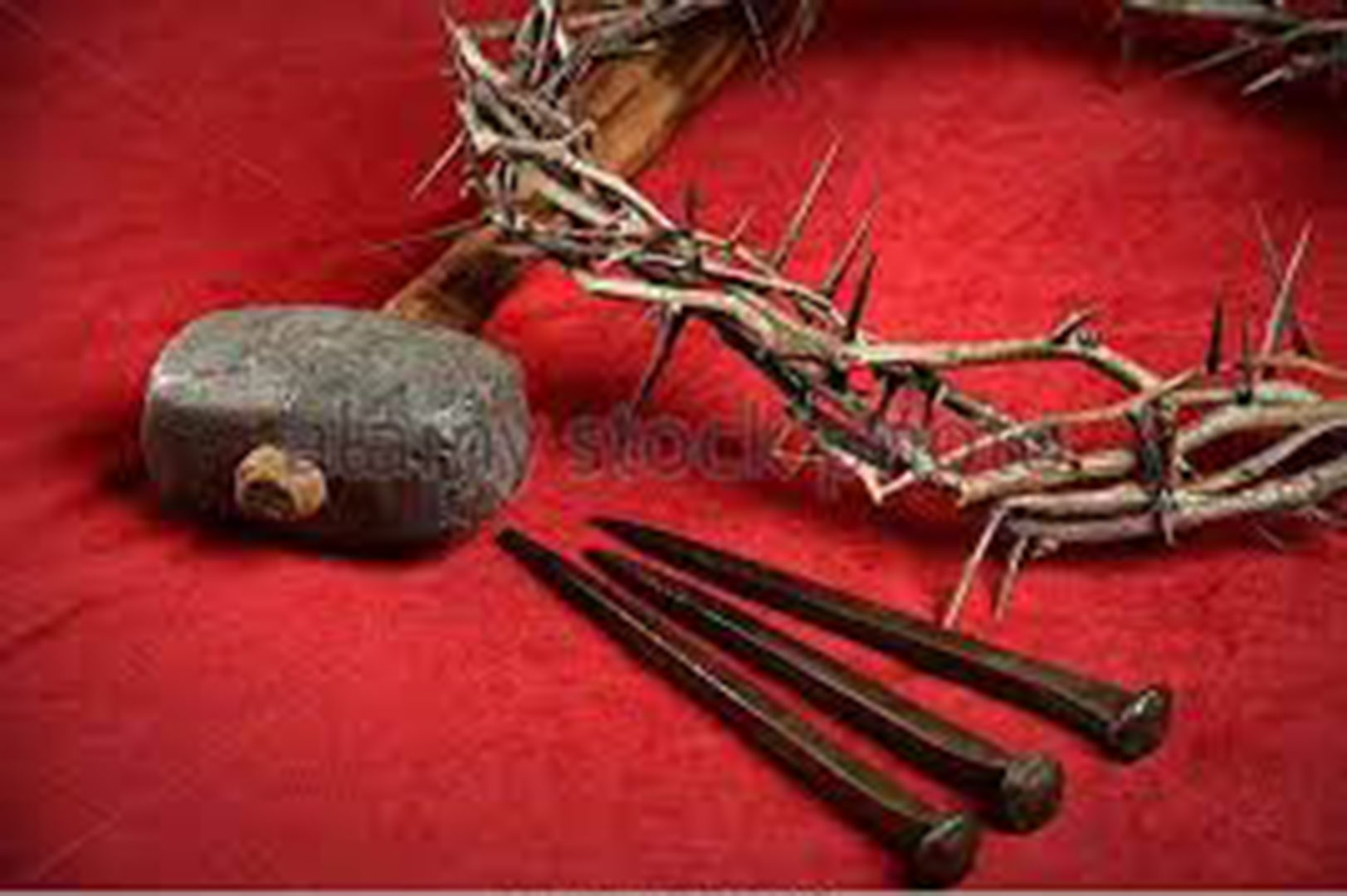Love Him with all your heart
Lent 2020 - Day 4
“God will love you, of course, even though you do not love him, but remember if you give him only half your heart, he can make you only fifty percent happy.” - Fulton Sheen (1895-1979)
Here's yet another author that can keep us company through Lent. Celebrated Archbishop and highly acclaimed radio and TV star, Fulton Sheen's writings and recordings never fail to strike a chord.
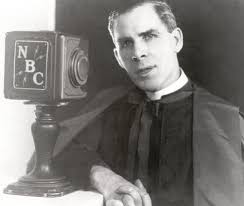
While still a parish priest, Sheen taught theology and philosophy at the Catholic University of America. Starting from 1925, he wrote seventy-three books. In 1930 he began a weekly NBC Sunday night radio broadcast, The Catholic Hour, on which he once referred to Hitler as an “anti-Christ”. In 1946, Time magazine featured him on the cover and referred to “the golden-voiced Msgr. Fulton J. Sheen, U.S. Catholicism's famed proselytizer”, whose radio broadcast received 3,000–6,000 letters weekly from listeners.
In 1940, Sheen celebrated an Easter Sunday Mass in 1940 in one of the first televised religious services. This put in motion a new avenue for his religious pursuits. In 1952, he moved to TV, presenting Life is Worth Living. It comprised unpaid Sheen simply speaking in front of a live audience without a script or cue cards, occasionally using a chalk board. Here he denounced the Soviet regime, saying, "Stalin must one day meet his judgment." The dictator died within a week.
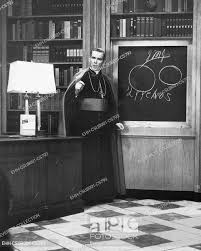
Did Cardinal Spellman drive Sheen off the air when Life is Worth Living was at the height of its popularity? Sheen never talked about the situation; he even praised Spellman in his autobiography titled Treasure in Clay: The Autobiography of Fulton J. Sheen (1980) and made only vague references to his “trials both inside and outside the Church.”
In 1958, Sheen became national director of the Society of the Propagation of the Faith and, eight years later, Bishop of the Diocese of Rochester, New York. From 1961-68, Sheen’s final presenting role was on the syndicated The Fulton Sheen Program. Through his career, Sheen helped convert a number of notable figures to the Catholic faith. Each conversion process took an average of 25 hours of lessons, and reportedly more than 95% of his students in private instruction were baptized.
Just before his retirement, Sheen was appointed archbishop of the titular See of Newport, Wales. Two months before he died, when Pope John Paul II visited St Patrick's Cathedral in New York, he embraced Sheen, saying, "You have written and spoken well of the Lord Jesus Christ. You are a loyal son of the Church.”
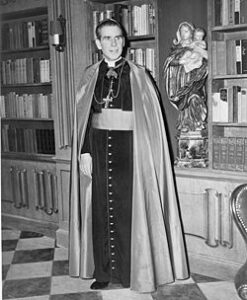 Today, the Fulton J. Sheen Museum in Illinois houses the largest collection of Sheen's personal items and the Sheen Center for Thought & Culture, Manhattan takes his name. In 2009, his shows began rebroadcasts on the EWTN and the Trinity Broadcasting Network’s Church Channel cable networks. Sheen's contribution to televised preaching makes him one of the first televangelists.
Today, the Fulton J. Sheen Museum in Illinois houses the largest collection of Sheen's personal items and the Sheen Center for Thought & Culture, Manhattan takes his name. In 2009, his shows began rebroadcasts on the EWTN and the Trinity Broadcasting Network’s Church Channel cable networks. Sheen's contribution to televised preaching makes him one of the first televangelists.
The cause for Fulton J. Sheen's canonization was officially opened in 2002. He is now Venerable. And venerable is also his large body of writings and talks.
Accepting the Cross
Lent 2020 - Day 3
"Each one of us has a cross to carry. Each one of us would like to be something he is not, to have something he has not, to be able to accomplish something he cannot. We need to let go of being what we are not, having what we have not, and accomplishing what we cannot; this is the way for all of us." - Plínio Corrêa de Oliveira (1908-1995), in 'Reflections on the Passion of Our Lord Jesus Christ' (https://www.tfp.org/lenten-reflections/)
In touch with the Society for the Defence of Tradition, Family and Property (TFP) for a decade (1989-1999), its Founder's spirituality came easily to mind in my quest for Lenten reading. Here are a few notes on the man whose life can't fail to touch a committed Christian:
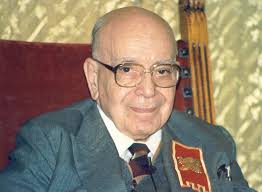
Plínio Corrêa de Oliveira was a Brazilian intellectual and Catholic activist. At 24 he became the youngest congressman in Brazil's history and a leader of the Catholic bloc. Valuing his Catholic faith above all else, he turned his back on a political career and served the Church. He taught Modern and Contemporary History at the Pontifical Catholic University of São Paulo and was editor of the Catholic weekly Legionário. In 1951, he founded the magazine O Catolicismo and later was a columnist for Folha de S. Paulo, the city’s largest daily.
Dr Plínio (as he was fondly known) was an avowed Thomist, his political ideology anti-Communist. To counter the school of liberation theology and the Cuban revolution, he founded the TFP in 1960. He decried the reforms of the Second Vatican Council but remained devoted to the Chair of St Peter.
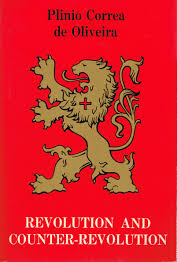
Dr Plínio is the celebrated author of fifteen books and over 2,500 essays and articles. Some of his works are: In Defence of Catholic Action (1943); Revolution and Counter-Revolution (1959), a seminal treatise that inspired the founding of autonomous TFP groups in several countries worldwide; The Church and the Communist State: The Impossible Coexistence; and Nobility and Analogous Traditional Elites in the Allocutions of Pius XII, his swan-song.
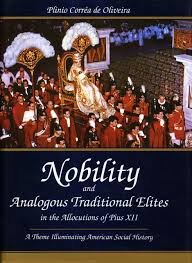
Dr Plínio's writings have the mark of an intense interior life. He had deep confidence in the Blessed Virgin Mary. An unparalleled twentieth-century crusader for a Christian Civilization, and the final victory of good over evil, he believed in the words of Our Lady at Fatima: “Finally my Immaculate Heart will triumph!”
After Dr Plínio's death, there was a split in the TFP. Eight co-founders took charge of the organization while a large chunk led by Mgr. João Clá Scognamiglio Dias left to set up Heralds of the Gospel. The new group, open to the reforms of the Second Vatican Council, was recognized as an International Association of Pontifical Right, the first one established by the Holy See in the third millennium. They are now present in 78 countries.
Mgr. Dias eventually got back control of the TPF, now devoid of its former glory. Meanwhile, the original co-founders of the TFP set up Instituto Plínio Corrêa de Oliveira (IPCO) to carry on the Founder’s ideology and activity. IPCO is associated with the TFPs and similar organizations worldwide, like the TFP was before their division.
In 1989, the TFP paid tribute to their Founder in a book titled O Homem, Uma Obra, Uma Gesta. Dr Plínio has many other biographies, two main ones being The Crusader of the Twentieth Century, by Roberto de Mattei (1998) and Rencontre avec Plínio Corrêa de Oliveira - Défenseur de la Chrétienté, by Mathias Von Gersdorff (2019). Earlier, regretting the absence of an autobiography, IPCO published Minha Vida Pública (2015), an anthology of writings that throw light on the life and mission of the man.
Knowing Dr Plínio Corrêa de Oliveira’s ideals fills a Christian with hope. His profound analysis of history and world events and his supernatural approach to life - a loving acceptance of the Cross - can uplift the most disheartened soul. To me, a decade with Dr Plínio was worth a lifetime.
Heralds of the Gospel, https://www.arautos.org/
IPCO, https://www.pliniocorreadeoliveira.info/biografia.asp)
The Springtime of Lent
Lent 2020 - Day 1
On the look-out for inspirational authors to read this Lent, I first thought of the old classics. But then I chanced upon a twentieth-century author: Therese Mueller, born in Germany, in 1905. An academic (economics and sociology) married to sociologist Franz Mueller, they were liturgical pioneers and involved in the Catholic youth movements in their country.
In 1940, the arrival of the Nazi regime interrupted their lives. The Mueller family migrated to the United States where people got interested in their faith experiences in Europe. Therese, with her sociological background, got vocal on how the liturgy could be taught and shared amidst a family. Her articles were compiled into a pamphlet titled Family Life in Christ (1941). Later she wrote Our Children’s Year of Grace (1943) and The Christian Home and Art (1950). These publications are an expression of her experiences as a wife and mother.
The Muellers eventually settled in St. Paul, Minnesota. Franz lectured at St Thomas University, while Therese taught part-time at St Thomas and at the College of St Catherine. The couple wrote and spoke about the Christian home as a crucial dimension for the liturgical life. Franz died in 1994 and Therese in 2002, leaving behind an eloquent life example of lay priesthood.

Here's an excerpt from Therese Mueller's Our Children’s Year of Grace (recently reprinted by Martino Fine Books, ISBN-13: 9781684222445), aptly describing the fruits of the springtime of Lent:
"We prepare for the renewal of our baptism, we suffer with Christ for our sins, we are buried with Him so that we may also arise with Him to a new life of grace and glory."
Beacon of hope
ADVENT 2015
Second Sunday
Readings: Baruch 5:1-9; Ps 126: 1-2, 2-3, 4-5, 6; Phil 1: 4-6, 8-11; Lk 3: 1-6
I find today’s Mass readings very meaningful and beautiful…. They are sure to strike a chord with you too, for they talk about hope.
The hopes we commonly express are untainted optimism; we use the word in a careless sort of way.
On the other hand, today’s Readings express an authentic hope, a hope grounded on God’s eternity and Christ’s Resurrection. These are the ultimate truths that bring meaning to our existence. God’s plan becomes plain; we see how He loves and cares for us. We begin to see His presence in world history and in our personal history. We learn to put aside romantic ideas of a life free of sorrow and pain and learn to face life with fortitude….
Not for nothing did Jesus assume our flesh and our weaknesses.
Truly, Advent readings are a beacon of hope in this valley of tears.
Have a blessed second Sunday of Advent!
Time for God
Cosmic space and time can be baffling. Remember the legend of the monk who, after wandering in what he thought was the close vicinity of his monastery, returned to it only after a few hundred years?
The story illustrates that we are no masters of our time, no pilots of our future; it also invites us to reflect on how we should be using our time and talents for our material and spiritual well-being. Finally, the story inspires deep gratitude to our Creator for all the time that He has made available to us.
It is often a question of priorities. If we come to realize that God holds the key to our destiny, we will have no difficulty in resetting our priorities; in fact, we will be naturally inclined to give God the space and the time that is due to Him.
Let us consider our holidays, and how we have spent them: Weren’t they dotted with ‘camps’ teaching us music, dance, painting, and so on, for personality development? But did we also realize that May was a month dedicated to Mary Our Mother? Some of us must have indeed spared some time to appreciate the Message of Fatima…! While we revelled in picnics and excursions to far-off places, was a pilgrimage to a holy place also part of our itinerary?
So much for our holidays…. Now about our careers and how we get there! We concentrate – and rightly so – on what we wish to achieve; but any idea what we may stand to lose too? If we get there by hook or crook, we stand to lose our morals; if we are so intensely absorbed by our careers that we find little time for prayer, we stand to lose the very purpose of our lives….
‘What does it profit a man if he gains the whole word and loses his soul?’ was a turning point in the life of St Francis Xavier. Without suggesting that we head for the nearby forest to spend the rest of our lives there, it is strongly recommended that we ensure a healthy balance in life. Let us not run away from the world; yes, by all means let us be in the world but let us not be of the world!
Let us fine-tune our lives while it is time. The great balancing act can be achieved only with divine help. We have the sacraments; let’s use them to be one with God, imbued with His spirit. Continually seeking God provides the ultimate meaning to our lives.
(Editorial, The Stella Maris Bulletin, Vol. 5, No. 1, July 2011)
The Nails of the Crucifixion
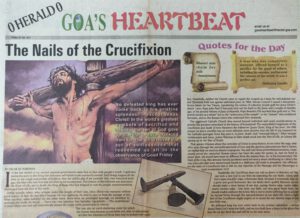
In the last month or so, several national governments came face to face with people’s wrath. Legitimate monarchs were in the firing line and some self-styled royals summarily ousted. Such things happen all the time in the rough-and-tumble of politics and are child’s play if we consider that, two thousand years ago, the Man who was God was crucified by his countrymen: The Creator of the Universe was destroyed, the Giver of Life put to death, the King of Kings who had deigned to visit his people, unceremoniously eliminated from the face of the earth.
Unlike worldly rulers, who collapse under the weight of their sins, Jesus Christ was executed without good reason. In fact, He was killed because He was righteous; He died to save us from the scourge of sin! What abnegation, what nobility! On the other hand, there were no prolonged hearings, no intention to ascertain the truth, no mercy…. There was only injustice, lies, brutality, ingratitude…. The annihilation of Jesus Christ was and will undoubtedly remain the worst crime perpetrated in history.
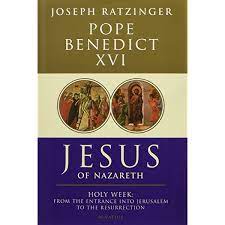
This was also an earth-shattering event for which the Chosen Race became accountable – alas, an irreversible act that the followers of Christ have had to painfully endure ever since. It caused them to have a mental block against the Jewish people; thankfully, neither the Church came to regard the Gospels as a basis for anti-Judaism nor did Christians hold out against individual Jews. Yet, the head of the World Jewish Congress, Ronald Lauder, recently accused the Christians of being silent spectators to the persecution of Jews.
Be that as it may, whether or not it was for the Jews to apologize to the Christians can be debated till the end of times. Without going into the long story of that failed relationship, it may be recalled that Pope Pius XII made efforts to mitigate the fall-out of what Churchill dubbed “a monstrous tyranny, never surpassed in the dark and lamentable catalogue of human crime.” In 1964, Vatican Council II issued a document, Nostra Aetate (‘In Our Times’), repudiating the notion of collective Jewish guilt for Jesus Christ’s death. Later, Pope John Paul II famously held out his hand to the Jews; and a couple of months ago, in his second volume of Jesus of Nazareth, Pope Benedict XVI ascribed that guilt not to “the Jewish people as a whole” but to the “aristocracy of the temple”, to the “masses” who acclaimed Barrabas, and to the Roman rulers who endorsed their demands.
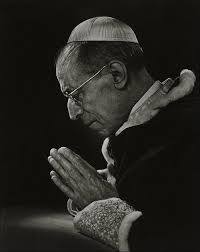
The aggrieved Catholic Church thus moved beyond individual and racial considerations to ponder the greatest watershed in the history of humankind! The unparalleled magnitude of the crucifixion and death of Iesvs Nazarenvs Rex Ivdaeorvm (‘Jesus Christ, King of the Jews’, the INRI plaque on every crucifix) was an event infinitely more decisive than the fall of any emperor! As the Catholic apologist Steve Ray puts it, in Jesus’ death God “rewound history”: Eden became Gethsemani and Satan, Judas! Whereas at Eden death stuck into the Tree of Life, at Calvary life sprang up at the Tree of Death.
That speaks volumes about the centrality of Christ in meta-history. As we relive His saga, year after year, through the sorrowful spectacle of Lent and the glorious phenomenon that is Easter, we realize that we need no scapegoats. As members of the human race, you and I are those proverbial Jews and Romans, transposed across the centuries! Human nature has been the same for aeons; so, had we lived in Jesus’ time, maybe we would have been no different from those Jews and Romans! The Jew in us stands out even today, when we distort His teachings; and the Roman in us, when we hail the distortion. Our offences are the nails of modern-day Crucifixion; our rejection of the Message and the Messenger, an eloquent re-enactment of it!

We can turn a new leaf in our lives by repenting for our faults. Adam and Eve’s lapse was called felix culpa, a fortunate fault, because it eventually won us a great and good Redeemer. But our faults don’t qualify likewise; so we should first make a clean breast of our sins, saying: Nostra culpa, nostra culpa, nostra maxima culpa – Our fault, our fault, our very great fault! Next, we should readily embrace the Cross, not to invite suffering but to accept its myriad forms through the ups-and-downs of our daily life. Even a light feel of the Crucifixion on our skin might inspire us to atone for our maxima culpa in our own little way….
No defeated king has ever come back to his pristine splendour – except Jesus Christ! Let’s keep the faith, and we too shall have a share in the glory that was His on the third day and will be so for ever more.
(First published in Herald, Panjim, 22 April 2011)
The Place to Celebrate Christmas
Have you ever wondered about the best place to celebrate Christmas?
In my growing years I would often hear overseas relatives sing the praises of Christmas celebrations in Europe; it made me feel that something was amiss in Goa. And last Sunday, Zelia, a plump and contented lady, sixty-plus, living in a suburb of Lisbon, boomed in the churchyard, ‘Here it doesn’t feel like Christmas at all. Back home, you will find shop windows decorated by now, and people rushing about their Christmas shopping.’
No feelings of inadequacy on my part this time round. If that is what she feels, so be it, I thought, and it took me back twenty years to my own reservations about Lent in the Portuguese capital. I remember saying then to Mario el mexicano, a university pal and churchgoer, ‘Back home, we have the Way of the Cross from our city church perched on a hillock to the Archbishop’s Palace on another hilltop. It’s unmistakable; it really makes one feel it is Lent.’
People are entitled to their individual feelings, aren’t they? And God can touch the core of our being in any situation we may be. Ours is not a rectilinear world; and like the heavenly bodies we can go in curves, yet reach the destination the Creator has planned for us. After all, whatever our weaknesses – to quote Yeats, the Irish bard – He who is wrapped in purple robes, with planets in His care, ha[s] pity even on the least of things asleep upon a chair….
But for our part it is better not to lose sight of the Ultimate Reality. At Christmas, the crib, the star, the tree and the lights – however beautiful; the carols – howsoever melodious; the sweets, no matter how delicious – and the little joys they all afford us – should not be an end in themselves.
Rather, our crib and star competitions could help us promote healthy relationships; our tall and intensely decorated trees, to gaze heavenward; the shiny decorative lights we display in our homes, to reflect the state of our souls; the carols we sing, to foster peace, goodwill and harmony among us mortals; and all the eats and drinks that we prepare could well be an expression of the profound joy and love we share with our family and friends.
And what shall we say about the ever-present Santa Claus and his gifts?
A few days ago, a young television journalist interviewing passers-by in the street came up to me, thundering with great expectation, ‘Sir, tell us what Santa Claus means to you and your children!’ And perhaps to her surprise, I said, nonchalantly, ‘Very little.’
Santa Claus means very little to me and my family. This is one institution that has almost become an end in itself – hardly a reminder of the good old St Nicholas, and of Jesus Christ, alas, none at all! Santa has not sanctified but altogether commercialized and secularized Christmas. How I wish Santa had not sought to turn this feast of extreme tenderness, extremely banal.
We cannot let the Christmas mystery turn banal. No doubt, Jesus was born in a humble stable, into a poor family. Simple shepherds were the first witnesses to this event. But – as the Catechism of the Catholic Church points out – ‘in this poverty heaven’s glory was made manifest.’ And the Church never tires of singing the glory of this night:
The Virgin today brings into the world the Eternal
And the earth offers a cave to the Inaccessible.
The Angels and shepherds praise him
And the magi advance with the star,
For you are born for us,
Little Child, God eternal!
This verse from Kontakion of Romanos the Melodist sums up that Mystery-in-swaddling-clothes. And, as the Catechism further remarks, ‘from the swaddling clothes of his birth to the vinegar of his Passion and the shroud of his Resurrection, everything in Jesus’ life was a sign of his mystery’ – a mystery that certainly calls for deep contemplation.
It is of supreme importance, particularly to contemporary man, to note that the Christmas mystery is richer than the richest of shop windows. And we needn’t go to the ends of the Earth to realize this: When we participate in the Mass this day, with a pure and contrite heart, we will come upon the experience like a benediction. Then we shall see that our hearts are the best Crib for the Little Child, God eternal, to be born in and also the best place to celebrate Christmas!
(Published as Editorial, The Stella Maris Bulletin, December 2008; and reprinted by Herald, 22 December 2008, and Renovação, 1-15 January 2009)
